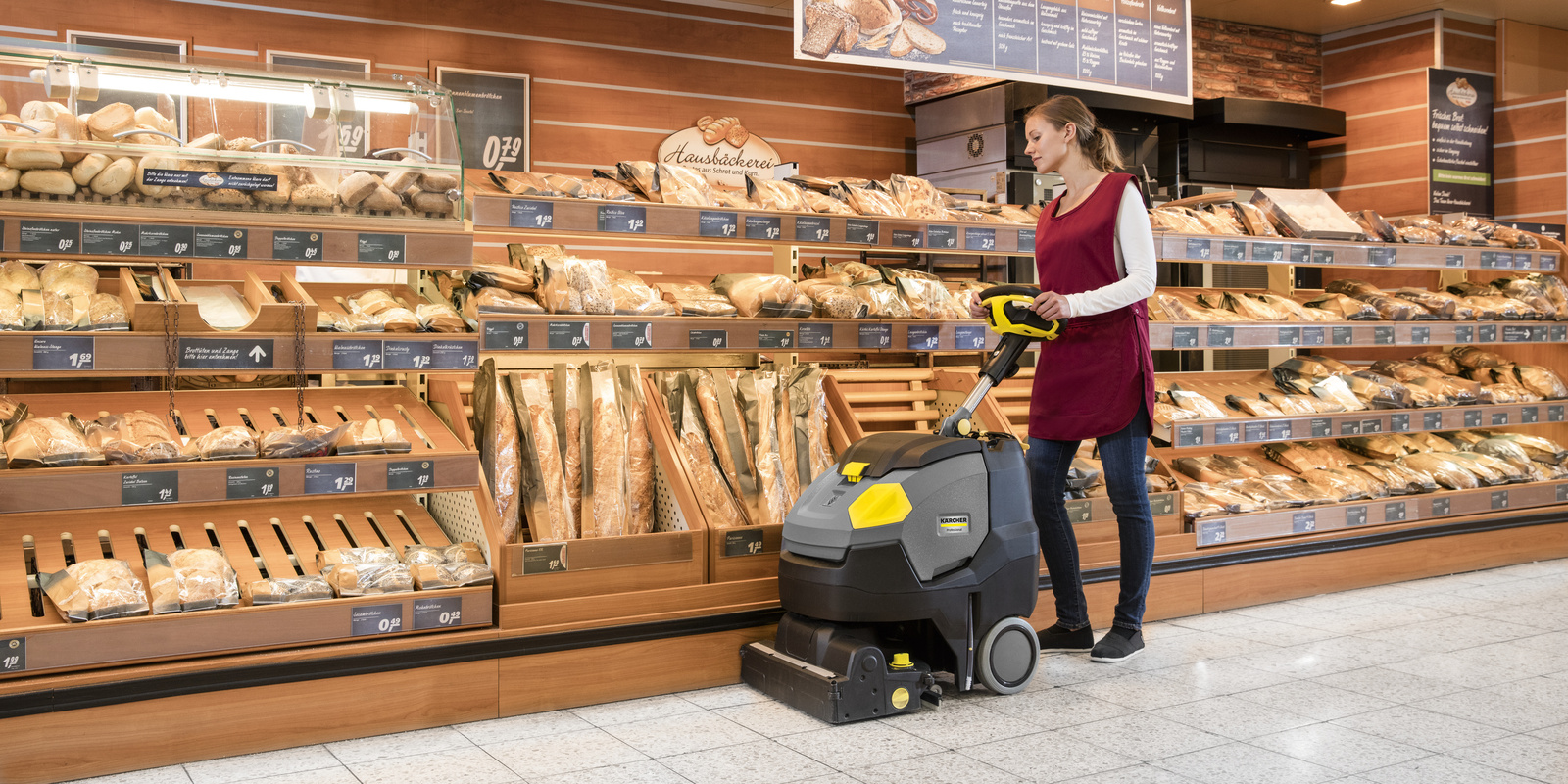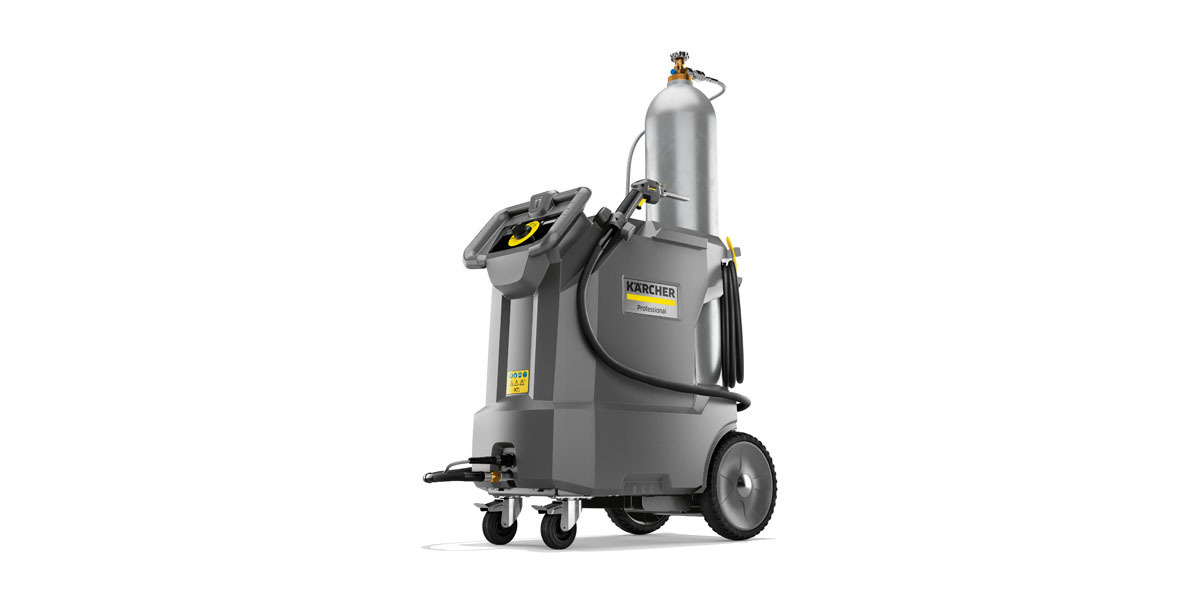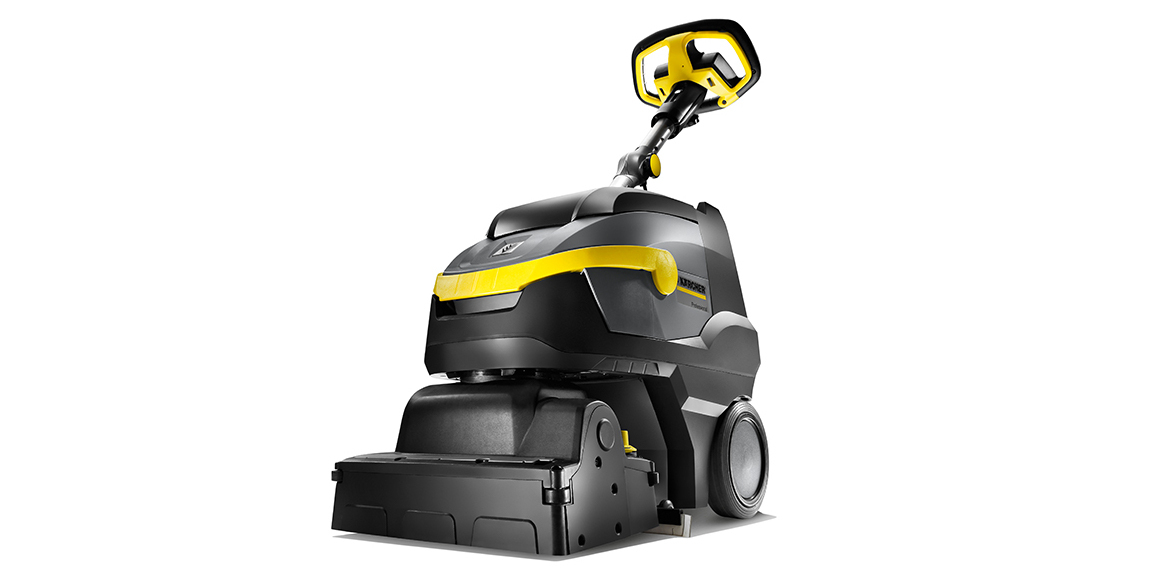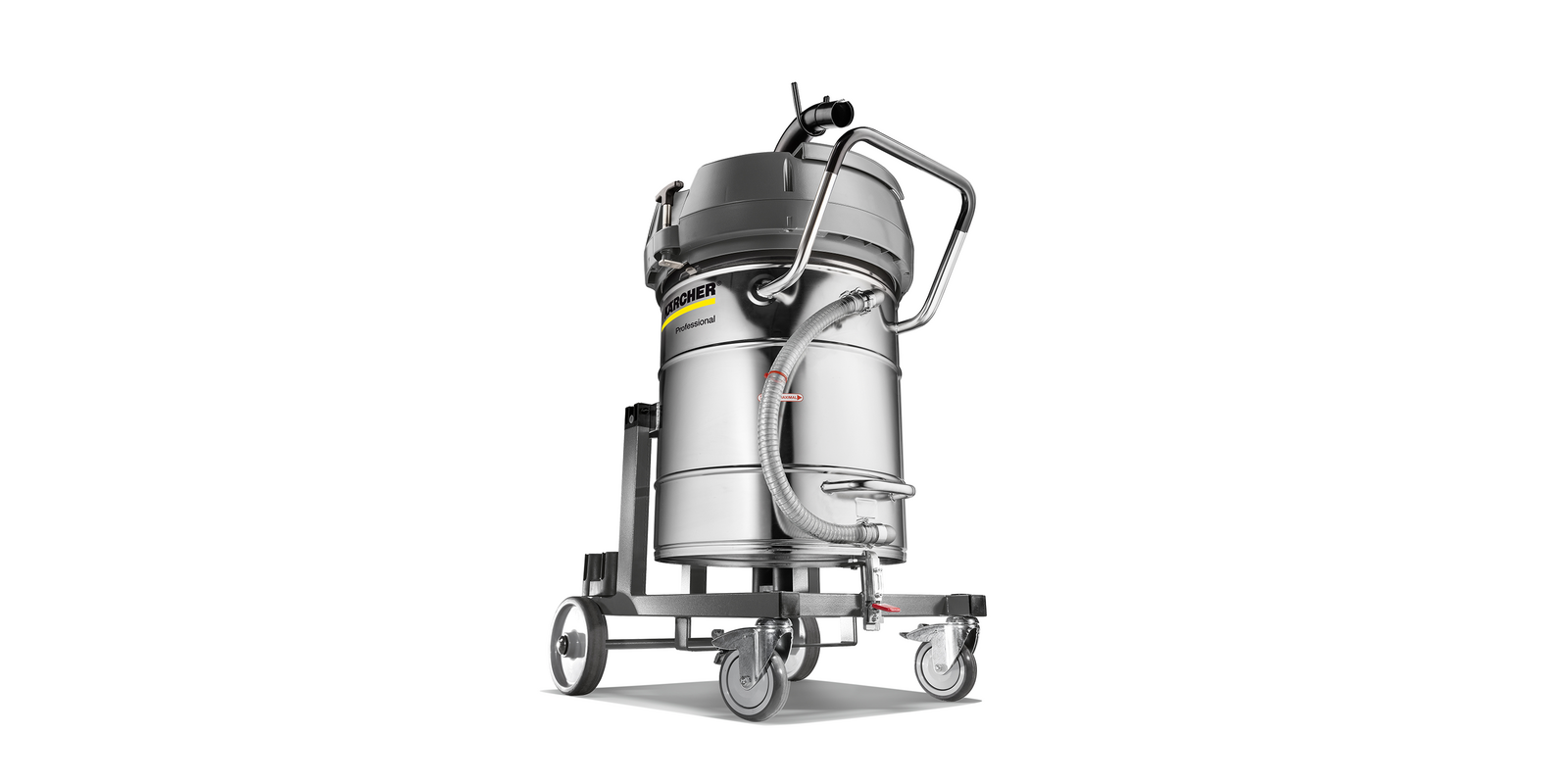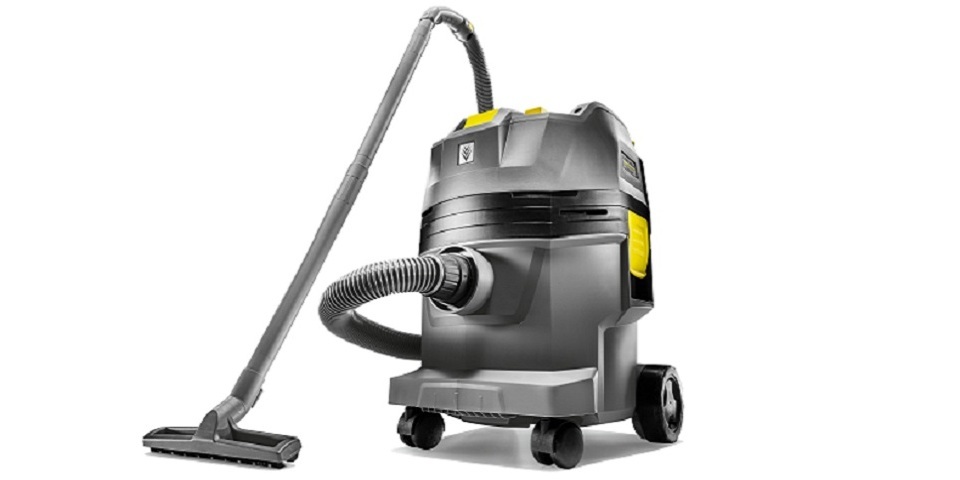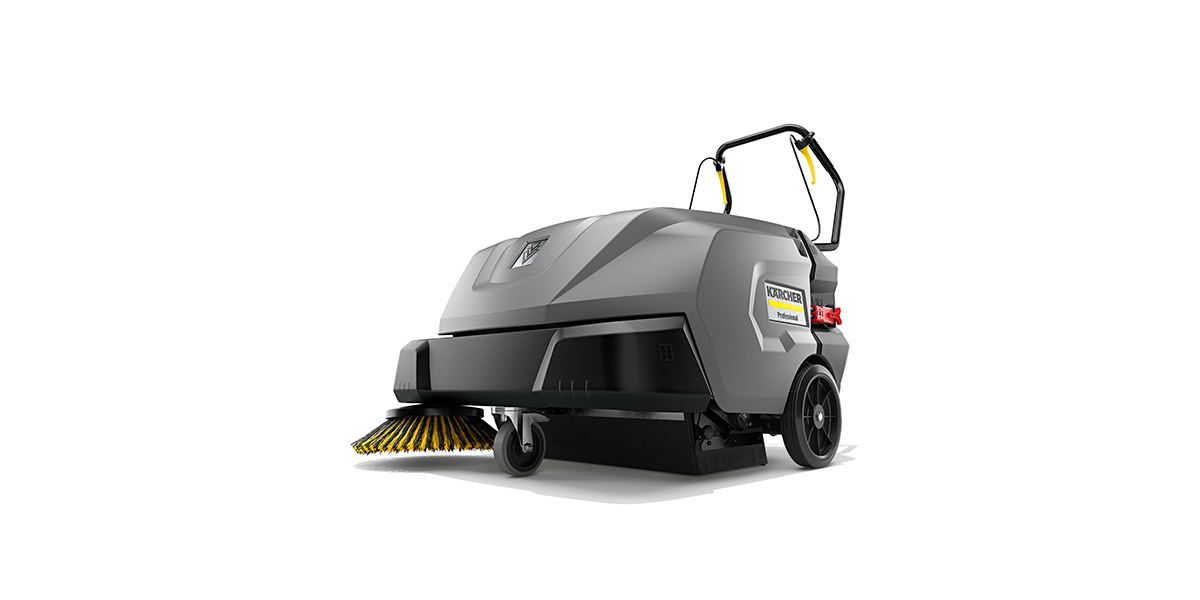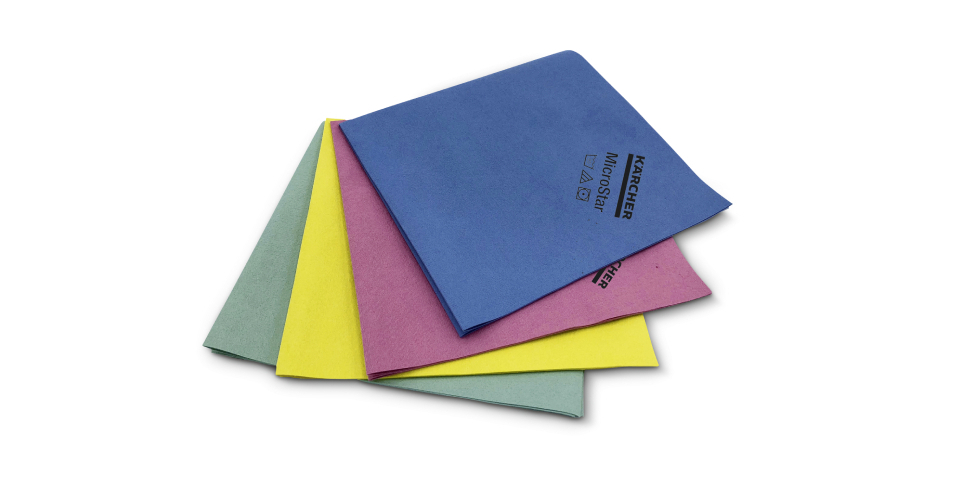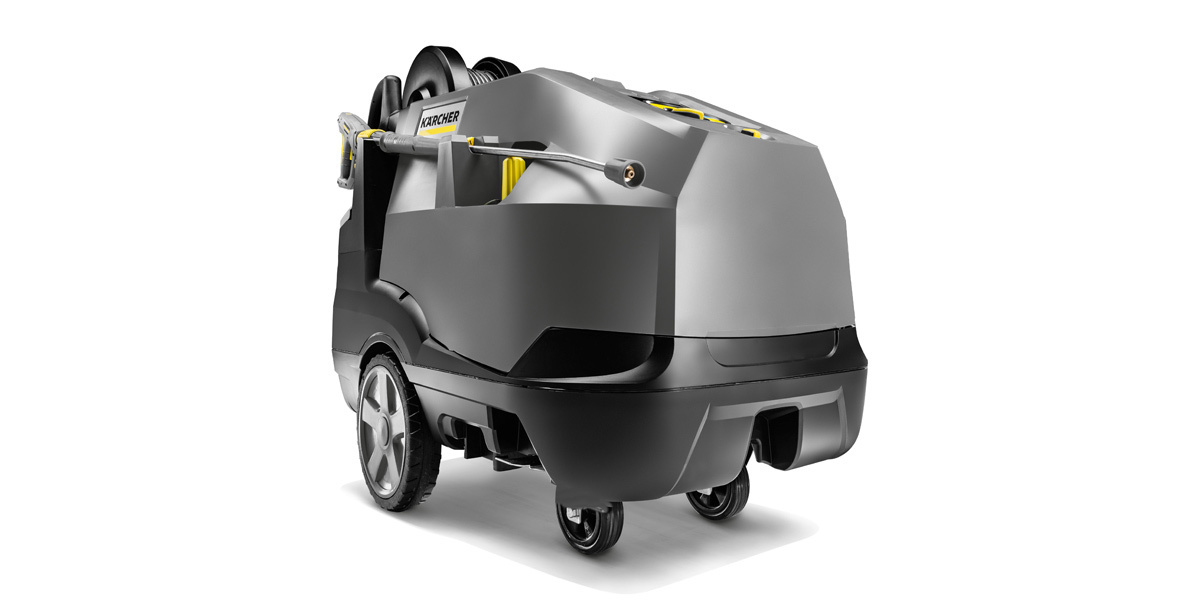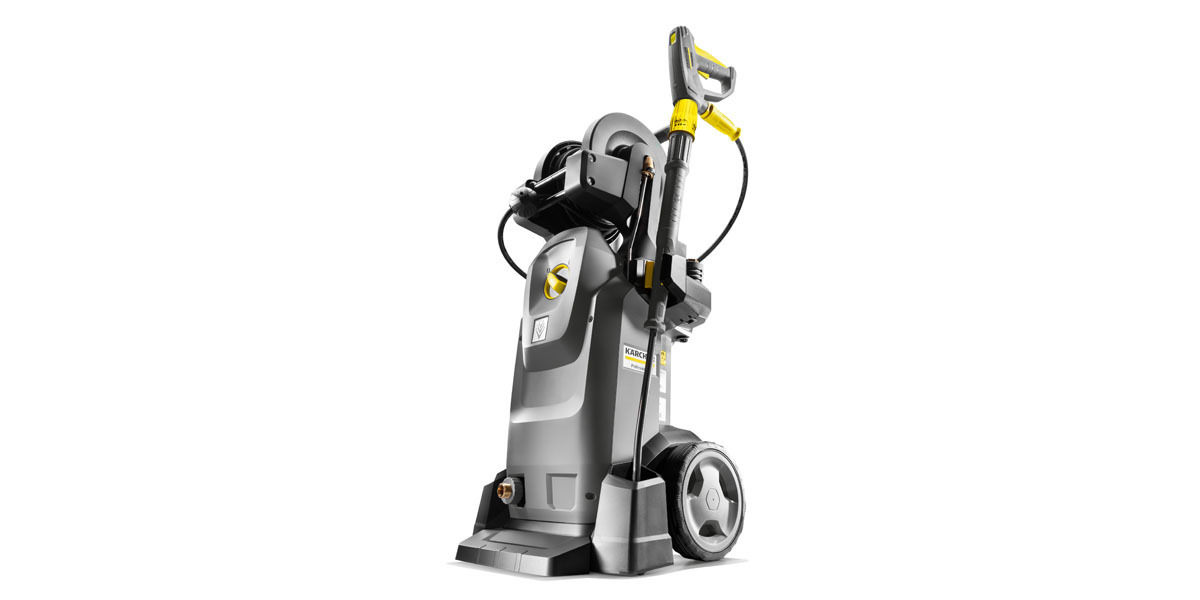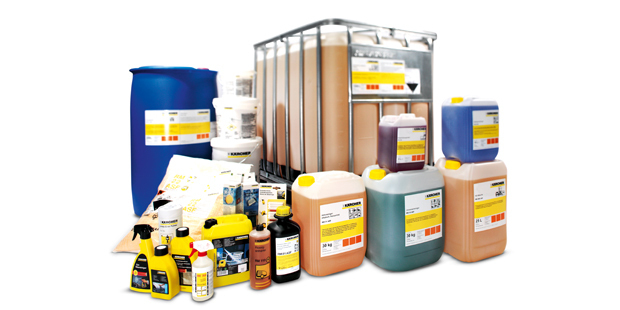Cleaning in the food industry
Hygiene is the number one priority in the food industry and is safeguarded by means of risk prevention and risk assessment systems, such as HACCP. Cleaning is therefore a vital lever for achieving market success and supplying consumers with flawless products. Appropriate measures and processes must be established, depending on whether raw materials or processed products are being manufactured. This also means determining whether a lot of water is to be used – as in meat processing plants – or as little water as possible, as in industrial bakeries.
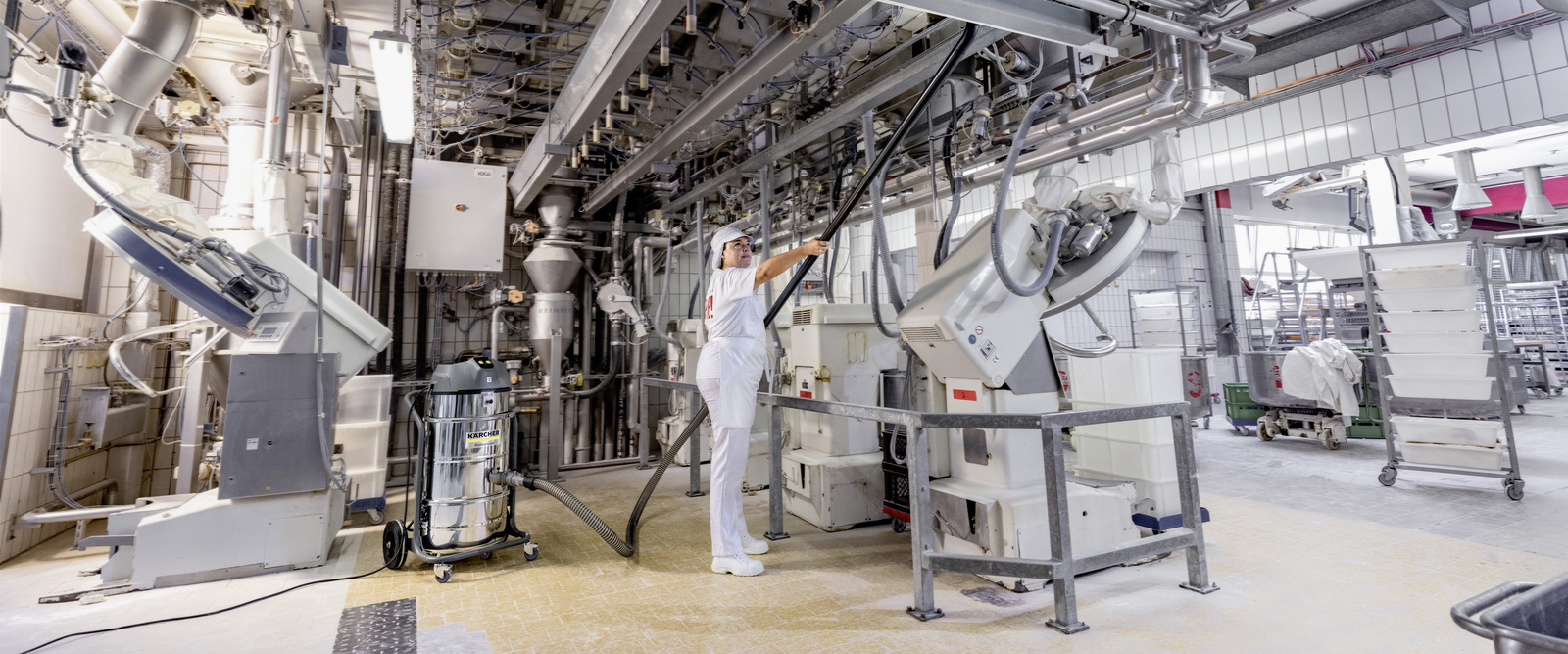
Meat processing: everything clean, every day
In meat processing plants that produce raw materials for other food manufacturers or the end consumer market, extensive cleaning is a matter of daily necessity. Tiled floors and walls, all operational machinery and all other infrastructure are cleaned thoroughly using high-pressure cleaners – sometimes using hot water as well. Low and medium pressure is often used in combination with high flushing performance to achieve cleanliness and to prevent the transmission of germs in aerosol form. Different detergents are used on an alternating basis, ensuring all soiling is effectively removed and microorganisms are deprived of their basis for life. Once the surfaces are clean, all surfaces that come into contact with food are disinfected. They are then rinsed with plenty of fresh drinking water.

Vegetable processing: cleaning between batches
Companies that process fresh vegetables into purée, for example, have different requirements to fulfil. Upstream, any soil or weed remnants are removed from the vegetables at a cleaning section. The machines are cleaned with a high-pressure cleaner and the soil is collected in a settling pit before being returned to the field. Production takes place in a closed area with little to no human intervention. No cleaning measures are normally required while production is ongoing. Before a new batch is started, however, the hammer mill, pipelines and silos must be cleaned to prevent cross-contamination or impurities.

Adapted to the process: measures from A to Z
These two examples alone prove that cleanliness and hygiene throughout the entire process can only be guaranteed when many different cleaning measures are incorporated in response to the specific production steps and the end product itself. This includes cleaning-in-place systems, as well as the use of industrial vacuum cleaners, extraction systems, high-pressure cleaners or steam cleaners. Floor cleaning with sweepers and scrubber dryers, as well as manual cleaning, also play an essential role in producing flawless products and avoiding expensive recalls and customer complaints.






